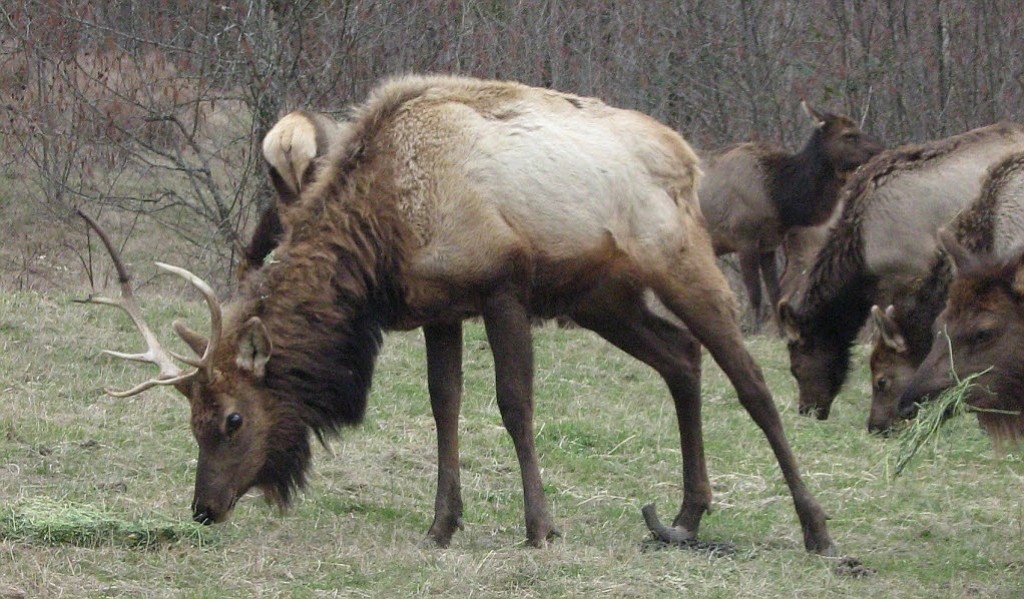State Department of Fish and Wildlife employees soon will begin shooting emaciated elk that are suffering from hoof disease under a complex, new procedure. And dozens of volunteers will be asked to help count limping elk this spring as the agency continues it research on the disease afflicting many elk in Southwest Washington.
Biologists also will fit cow elk with radio collars and track them for years to see what happens to those with and without hoof disease.
The department staff discussed their next steps on dealing with hoof disease during meeting last week of officials and citizens who make up the Elk Hoof Disease Public Working Group.
Starting this spring, Department of Fish and Wildlife employees will put down elk with hoof rot, but only if they are severely emaciated, unable to stand or two or more hooves are severely affected, according to a draft of the euthanasia procedure. At first, only agency employees will carry out the euthanasia “to make sure it works,” said Sandra Jonker, regional wildlife manager.
Later, Master Hunters (who have taken a special class) will help with disposing of the carcasses, on site if possible. The department tells hunters that it’s OK to eat the meat from most elk with hoof disease, but the animals that will be euthanized are expected to be in such poor condition that their meat won’t be edible, Jonker said.
Despite widespread reports of elk that are limping with misshapen hooves in Southwest Washington, biologists don’t know what percentage of the herds are affected. To find out, a major counting effort is scheduled for March and April.
Volunteers will be asked to drive roads throughout Southwest Washington and count limping and non-limping elk. During a small trial run last summer, 13 percent of the elk were limping, though the results of the larger study could be significantly different, Jonker said.
Training sessions for volunteers will be held in early March, though dates haven’t been scheduled.
Most of the hoof rot survey routes are on public land, but the agency is hoping to get permission to survey private timberlands, too, Jonker said.
In another line of research, starting next month biologists will fit several cow elk — 60 with hoof rot and 20 that appear healthy — with radio collars and track them for four years. Biologists hope to learn how hoof disease affects survival and whether the disease affects the birth rate.
The agency will track only cows because “it comes down to adult female survival” when determining whether herds stay at desired levels, said Brock Hoenes, the agency’s statewide elk specialist.
The elk will be captured in nets dropped from helicopters. Hoenes said it would take much longer to trap the elk in less stressful ways to get the collars on them.
In response to questions from working group members, Jerry Nelson, WDFW deer and elk section manager, said the agency won’t know how many people hunted elk last season until next month, after reports from hunters have been submitted.
Statewide, hunting license sales were up last year but no breakdown by county is available.
Mark Smith, owner of Eco Park on Spirit Lake Memorial Highway and a member of the working group, said that fewer hunters came to the Toutle area last season.
“We were severely down last year — over 50 percent,” he said.
Several people who commented suggested that the use of herbicides on private forest lands is linked to hoof disease.
The disease “is concentrated on one timber company’s land,” said Bruce Barnes of Vancouver, referring to Weyerhaeuser.
Gene Crocker, a member of the Cowlitz Game & Anglers Club, said herbicides may kill plants that are beneficial to elk, making them more susceptible to disease. “You’d better start talking to timber companies about that spray,” Crocker said.
Jonker said the state hasn’t seen any evidence that herbicide use causes hoof disease.
“I think if you’re looking for a smoking gun you’re not going to find one,” said Bob Schlecht, owner of Bob’s Sporting Goods. “It’s going to be a combination of factors.”



